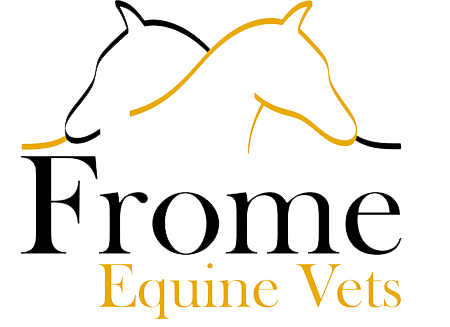What is laminitis?
Laminitis means inflammation of the laminae within a horse’s foot. The laminae are delicate structures which form the junction between the hoof wall and the pedal bone inside the foot. Inflammation of the laminae weakens them, causing the pedal bone to become unstable within the horse’s foot. In mild cases of laminitis, when treated correctly, the inflammation gradually subsides without the development of any structural changes. In more severe cases, however, movement and the weight of the horse bearing down on the feet can tear the laminar attachments resulting in either rotation or sinking of the pedal bone within the hoof capsule.
Signs of laminitis
The most usual feature of laminitis is lameness, usually in multiple legs. The lameness can vary from a mild ‘pottery’ gait to lameness so severe the horse or pony refuses to move or even stand. The lameness is more apparent on hard ground with the horse being much more comfortable on a soft surface. At rest, affected horses will often stand with the forelegs out in front of them and the hind legs tucked underneath the body and may shift weight from one foot to the other. The feet are often warm to the touch and there will be strong bounding pulses in the digital arteries which run down the sides of the fetlock. In advanced cases there is a palpable depression over the front of the coronary band as a result of pedal bone sinking or rotating.
Causes of laminitis
Recent research has changed our views on the causes of laminitis. Grass alone does not cause laminitis but it is an important trigger factor in susceptible horses. It is now recognised that over 90% of cases of laminitis are caused by an underlying hormonal disorder – usually EMS (equine metabolic syndrome) or Cushing’s disease (PPID).
EMS can develop in any breed but is most common in native breeds. The key factor is excessive body fat. Over time, obesity can have profound effects on a horse’s metabolism and lead to insulin resistance (very similar to type II diabetes in humans). When horses and ponies with insulin resistance consume rich grass or feeds high in sugars and starch, abnormally high levels of insulin are released into the bloodstream. For reasons we do not currently fully understand, these high levels of insulin in the blood cause inflammation and damage to the laminae that causes laminitis. Signs of EMS can range from those horses and ponies who never seem to lose weight (and ‘live off fresh air’) to horses and ponies with markedly abnormal fat deposits around the top of the tail and a thick, cresty neck.
Equine Cushing’s disease (or PPID) is one of the most common diseases affecting older equines and causes symptoms such as a long curly coat, abnormal sweating and increased drinking and urination. PPID is caused by over- production of various hormones by the pituitary gland. One effect of this condition can be insulin resistance which can lead to laminitis in the same way it does with cases of EMS.
There are a few much less common causes of laminitis. Occasionally, very sick (toxic) horses can get laminitis, as can mares who do not pass their afterbirth within a few hours of foaling. In very lame horses, for example those with a fractured limb, the opposite leg is forced to carry extra weight overloading the laminae and sometimes causing laminitis in this sound leg. Prolonged exercise on hard surfaces can also trigger a traumatic laminitis eg endurance races.
Treatment of laminitis
If you suspect your horse or pony has laminitis you should arrange a visit from your vet as the sooner laminitis is treated, the more likelihood there is of a better long-term outcome. Box rest is essential to minimise further damage within the hooves and will make the horse much more comfortable. The priority in the initial treatment of laminitis is to support the pedal bone to prevent rotation or sinking. A deep (6”) bed, preferably of shavings, is ideal as the bedding packs up under the foot to provide support and cushioning. It is important that the horse does not walk any more than necessary as movement will increase the strain on the laminae and therefore increase the risk of rotation or sinking.
Painkillers such as phenylbutazone (Bute) are prescribed to make the horse more comfortable and to reduce foot inflammation. Your vet will advise on the best diet for your horse, but if in doubt feeding well soaked hay or low calorie chaff is appropriate.
Once your vet has diagnosed laminitis and assessed the severity it is essential to attempt to establish the underlying cause of the laminitis. Blood tests may be needed to diagnose PPID or EMS. If your vet is concerned that rotation or sinking has occurred they will advise that radiographs are taken of the feet to assess the position of the pedal bone. The images will reveal the severity of laminitis which influences the treatment plan and gives a more accurate long-term prognosis. Your farrier can also use the radiographs to trim the foot more accurately and to position the shoes to provide optimal support.
Good farriery is essential in the treatment of laminitis, particularly when rotation or sinking has occurred. The foot must be carefully trimmed to gradually correct the orientation of the pedal bone relative to the ground. Once the acute inflammation has subsided heart bar shoes are often applied to support the pedal bone and stabilise the hoof capsule. Metal shoes are usually used, but bad cases may benefit from glue on plastic shoes which are gentler on the foot.
Correction of laminitic changes is a slow process and the feet will need careful regular attention.

